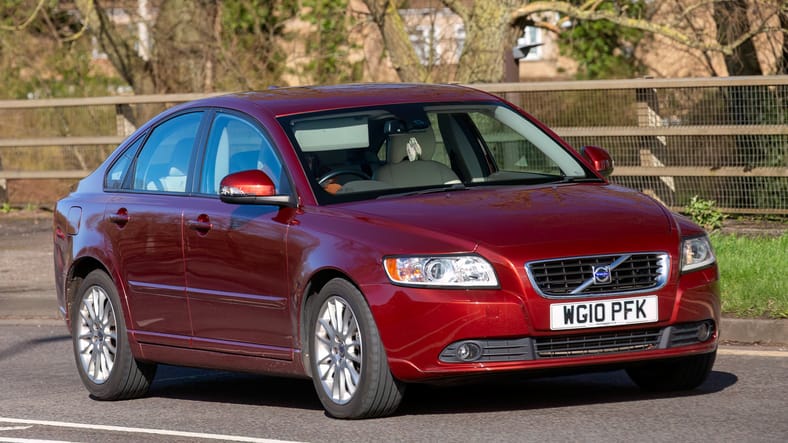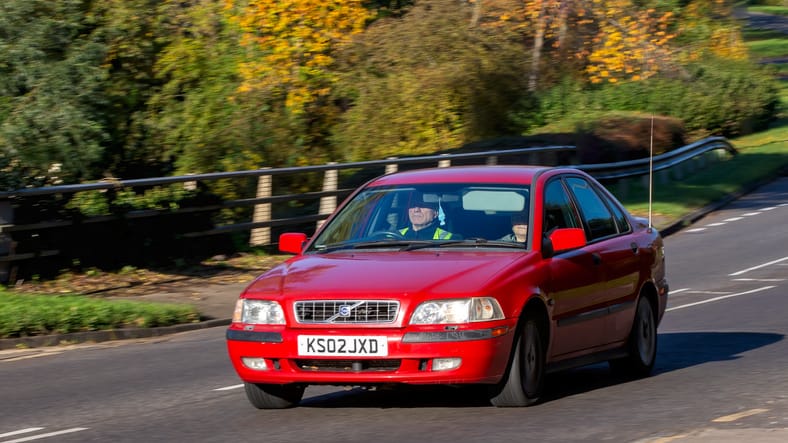The Volvo S40: A Legacy of Safety and Style

The Volvo S40 carved a niche for itself in the automotive world as a subcompact executive car. Produced by the Swedish automaker Volvo Cars from 1995 to 2012, it offered a compelling blend of safety, performance, and style in a more affordable package compared to its larger sibling, the S60. This article delves into the history, features, and variations of the Volvo S40 across its two distinct generations.
A Fresh Start: The First Generation S40 (1995-2004)
Prior to the S40, Volvo's 400 series represented the brand's entry-level offerings. The S40, along with its wagon counterpart, the V40, marked a significant departure. This was a completely new car, built from the ground up. Sharing only one engine (the 1.9 turbo diesel) with the outgoing 400 series, the S40 emphasized a focus on modern design, improved performance, and, of course, Volvo's renowned safety.

The first generation S40 offered a variety of engine options, catering to a range of driving preferences. Base models came equipped with naturally aspirated 1.6-liter and 1.8-liter gasoline engines, providing a balance between fuel efficiency and everyday driving capability. For those seeking more power, Volvo offered a selection of turbocharged engines, including the popular 2.0T, which delivered a spirited driving experience.
Safety First: A Hallmark of Volvo Engineering
Volvo has always prioritized safety in its car designs, and the S40 was no exception. It incorporated a plethora of safety features, including:
- Side Impact Protection System (SIPS): This innovative system, a Volvo hallmark, offered enhanced protection for occupants in side-impact collisions.
- Whiplash Protection System (WHIPS): This technology helped mitigate neck injuries caused by rear-end impacts.
- Anti-lock Braking System (ABS): Standard on all S40 models, ABS prevented wheel lockup during hard braking, allowing for better control and stopping power.
- Airbags: Driver and passenger airbags were standard equipment, with side airbags available on some models.
These safety features, coupled with the S40's robust body construction, earned it high marks in crash tests, solidifying Volvo's reputation for building safe cars.
Evolving Design: A Refresh for the New Millennium
In 2000, the first generation S40 received a mid-cycle refresh. The exterior design adopted a sleeker and more modern look, with revised headlights, taillights, and bumpers. The interior saw improvements in material quality and ergonomics, enhancing the overall driving experience.
The Second Generation S40 (2004-2012): A Shift in Focus
The year 2004 marked the arrival of the second generation S40. This iteration was a significant departure from its predecessor. Developed in collaboration with Ford Motor Company, the new S40 shared its platform with the Ford Focus. While some enthusiasts lamented the loss of a distinct Volvo character, the second generation S40 did offer several advantages.
The new platform provided increased interior space and improved handling. Engine options continued to cater to diverse needs, with naturally aspirated and turbocharged gasoline engines available. Notably, the high-performance T5 variant offered a thrilling driving experience with its turbocharged 2.5-liter engine.
A Focus on Comfort and Refinement
The second generation S40 placed a greater emphasis on comfort and refinement. The interior design was more upscale, featuring higher-quality materials and a focus on user-friendliness. Technological advancements included improved audio systems, navigation options, and Bluetooth connectivity.

Safety Remains Paramount
Volvo's commitment to safety remained unwavering in the second generation S40. The car incorporated advanced safety features like:
- Electronic Stability Control (ESC): This system helped maintain vehicle stability during critical maneuvers.
- Traction Control System (TCS): This technology prevented wheel spin during acceleration, ensuring better grip and control.
- Improved Airbag Systems: The second generation S40 offered a wider range of airbags, including side curtain airbags for enhanced head protection.
These advancements, along with the car's robust construction, continued to position the S40 as a leader in safety within its segment.
The End of an Era: The S40's Legacy
In 2012, after a successful 17-year run, Volvo discontinued the S40. It was succeeded by the V40 hatchback, which marked a shift towards a more premium and design-focused approach.
